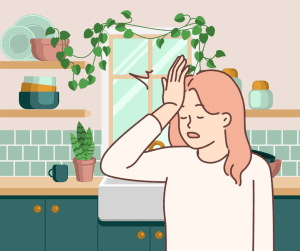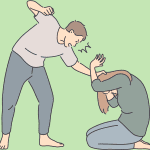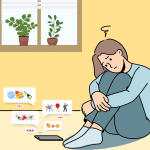
What is Self-Harm?
Self-harm is not a mental health illness itself, however, in most cases, it occurs with mental illnesses like borderline personality disorder, depression, eating disorders, anxiety or post-traumatic stress disorder.
Individuals who have experienced trauma, neglect or abuse or suffer from drug or alcohol addiction are at risk of using self-harm as a coping mechanism.
Self-harm isn’t the same as attempting suicide. However, it is a symptom of emotional pain that should be taken seriously. If someone is hurting themself, they may be at an increased risk of feeling suicidal.
Why do people harm themselves?
The urge to hurt oneself can start with overwhelming anger, frustration or pain. Individuals who have never learned how to deal with those negative emotions and may have been told to hide them may use self-harm to release these emotions. Injuring yourself stimulates the body’s endorphins or pain-killing hormones, therefore your mood can be increased when harming yourself.
In other cases, self-harm is used by people who experience a numbness of emotions. Especially in the context of depression, self-harm can be used to “feel something”.
Another reason for self-harm can be self-hatred. One might feel the urge to hurt oneself as a punishment for something they have done.
Harming yourself can lead to shame and guilt which increases the risk of harming yourself again. The behaviour can thus become a dangerous cycle and a long-term habit. Some people even create rituals around it.
Treatment against self-harm
When someone is suffering from self-harm it is vital to treat the underlying issues that lead to the self-harming behaviour in the first place.
There are effective treatments for self-harm that can allow a person to feel in control again. Psychotherapy is important to any treatment plan. Self-harm may feel necessary to manage emotions, so a person will need to learn new coping mechanisms. If you suffer from self-harm here is what you can do to escape that dangerous circle:
- First, you should talk to someone you trust, for example, a friend or family member.
- After that is important to go see a professional like your family doctor or a psychiatrist. They will ask you questions about your self-harming behaviour and its triggers. You must be honest with them since they have to rely on the information given by you in order to create a customised treatment plan for your individual needs.
- Depending on any underlying illness, you may be prescribed medication to help with negative emotions.
- In most cases, the professional will recommend therapy to help you cope with your emotions.
- If your symptoms are overwhelming or severe, your doctor may recommend a short stay in a psychiatric hospital. A hospital offers a safe environment where you can focus your energy on treatment.
What to do when someone self-harms?
Perhaps you have noticed a friend or family member with frequent bruises or bandages. If someone is wearing long sleeves and pants even in hot weather, they may be trying to hide injuries or scarring.
Keep in mind that this is a behavior that might be part of a larger condition and there may be additional signs of emotional distress. They might make statements that sound hopeless or worthless, have poor impulse control, or have difficulty getting along with others.
If you’re worried a family member or friend might be hurting themself, ask them how they’re doing and be prepared to listen to the answer, even if it makes you uncomfortable. This may be a hard subject to understand. One of the best things is to tell them that while you may not fully understand, you’ll be there to help. Don’t dismiss emotions or try to turn it into a joke.
Gently encourage someone to get treatment by stating that self-harm isn’t uncommon and that doctors and therapists can help. If possible, offer to help find treatment. But don’t go on the offensive and don’t try to make the person promise to stop, as it takes more than willpower to quit. It’s important to find treatment for the underlying emotions.





























